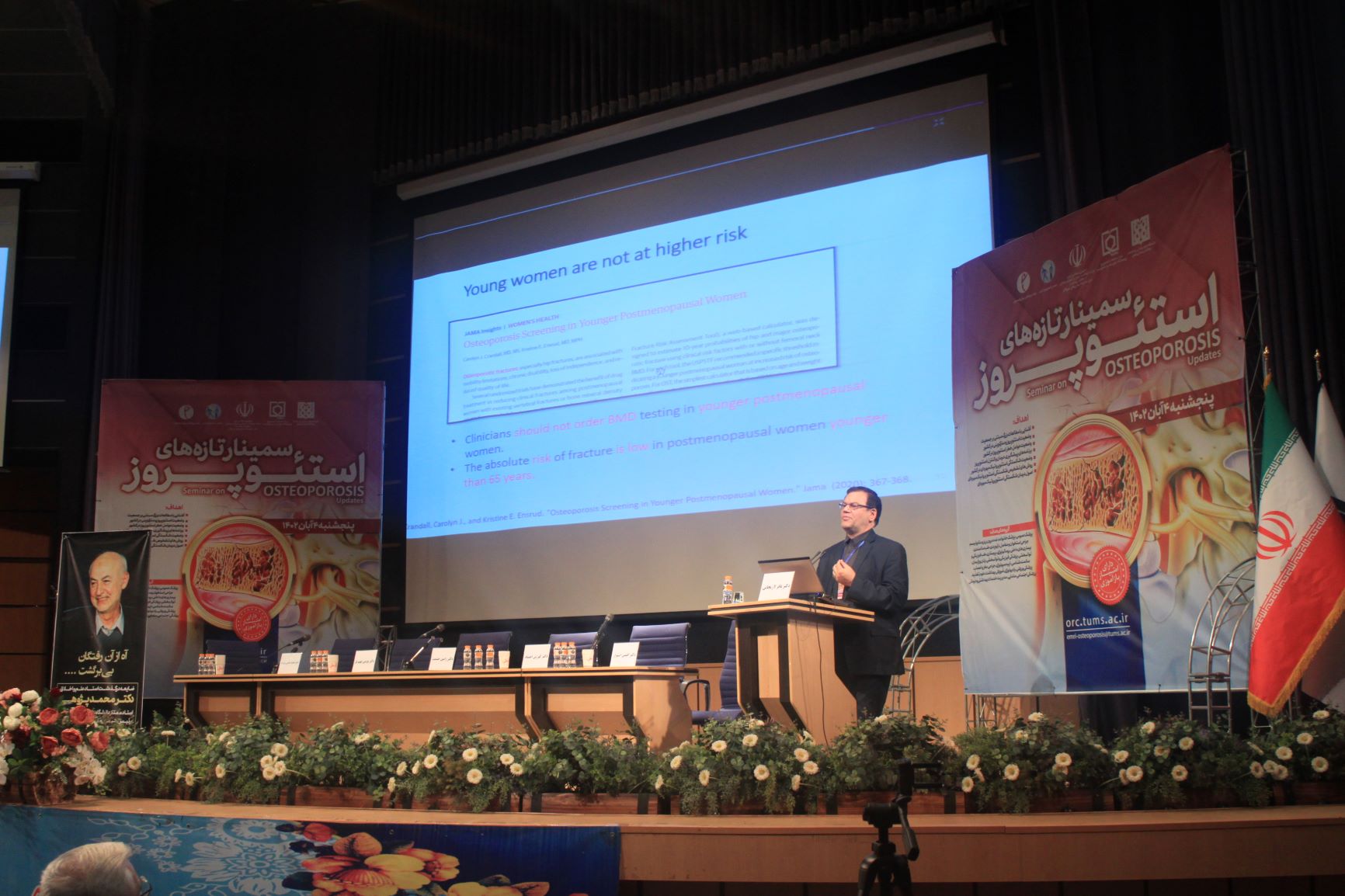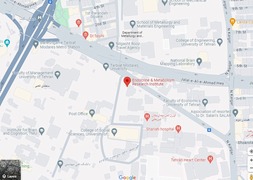- 1404/08/04 Cost‑effectiveness analysis of fracture liaison services in Iran
- 1404/07/14 Evaluation of bone mineral density and its influencing factors in patients infected with HIV under antiretroviral therapy
- 1404/05/12 Association between serum hemoglobin level and bone mineral density in adults Iranian multi center osteoporosis study IMOS
- 1404/03/21 Endocrinology and Metabolism Research Institute Signs MOU with Dairy Industry Association to Promote Bone Health
- 1403/09/01 Osteoporosis Updates Seminar: Advancing Prevention, Diagnosis, and Treatment
- 1403/07/04 Holding the World Congress on Osteoporosis and Musculoskeletal Diseases hosted by the International Osteoporosis Foundation
- 1403/07/04 Imam Khomeini Hospital in Sari Recognized as a Global Leader in Fracture Prevention

Introduction of the Center
The Osteoporosis Research Center was initially established as the Osteoporosis Research Group in 1999 within the Endocrinology and Metabolism Research Center at Tehran University of Medical Sciences. Leveraging the expertise of faculty members and skilled researchers, it has conducted extensive studies on osteoporosis, the most common bone disease in the country, over the past decade. Due to the significant research and efforts of this group, the Osteoporosis Research Center resumed its activities in May 2010 as an officially recognized research center under the Endocrinology and Metabolism Research Institute.
One of the most important initiatives of this center has been the implementation of a comprehensive program for the prevention, diagnosis, and treatment of osteoporosis across the country, in collaboration with the Ministry of Health, Treatment, and Medical Education and five research centers from universities in Iran (Tehran, Shiraz, Mashhad, Tabriz, and Bushehr). In this program, bone mineral density (BMD) and serum vitamin D levels (a crucial factor influencing bone density) were measured alongside other factors affecting bone health in over 6,000 Iranian adults, making this project the largest research initiative in the Middle East. A key achievement of this initiative has been the establishment of a research network for osteoporosis in Iran, fostering collaboration and close connections among officials, faculty members, and researchers involved in the comprehensive osteoporosis program from across the country.
Initially designed to operate in five main regions, this network has now expanded to include more areas of the country. Pursuing the initial goals of the comprehensive program for osteoporosis prevention, diagnosis, and treatment, monitoring the disease in these regions, providing therapeutic solutions to health systems and the public, and expanding the research scope in line with global efforts on osteoporosis have been among the network’s contributions.
Another significant achievement of this center has been the design and implementation of the "Food Fortification with Vitamin D" program, which is an effective strategy for preventing and treating vitamin D deficiency, especially since this deficiency is a contributing factor to the onset of osteoporosis in children and adolescents during growth.
It is worth noting that with its two sections for measuring bone density and establishing osteoporosis clinics, the center aims not only to manage clinical and research activities related to osteoporosis but also to provide the best services for patients suffering from this condition in the country.

Education is another essential pillar of this center's activities. To this end, various conferences and comprehensive seminars have been organized for the public and healthcare personnel. A collection of booklets, brochures, and clinical guidelines for patients and doctors has also been prepared and made available.
Given the prevalence of osteoporosis and its significance in the country, stakeholders have been motivated to establish the Osteoporosis Association to address the challenges faced by patients now and in the future. Additionally, launching an international journal on osteoporosis is another step toward expanding knowledge on this disease. Membership in the International Osteoporosis Foundation (IOF) and establishing scientific communication with various international organizations involved in osteoporosis research and clinical activities have been further actions taken by this center.
It is hoped that this center will continue to take significant steps in enhancing community health and advancing knowledge in the field.


